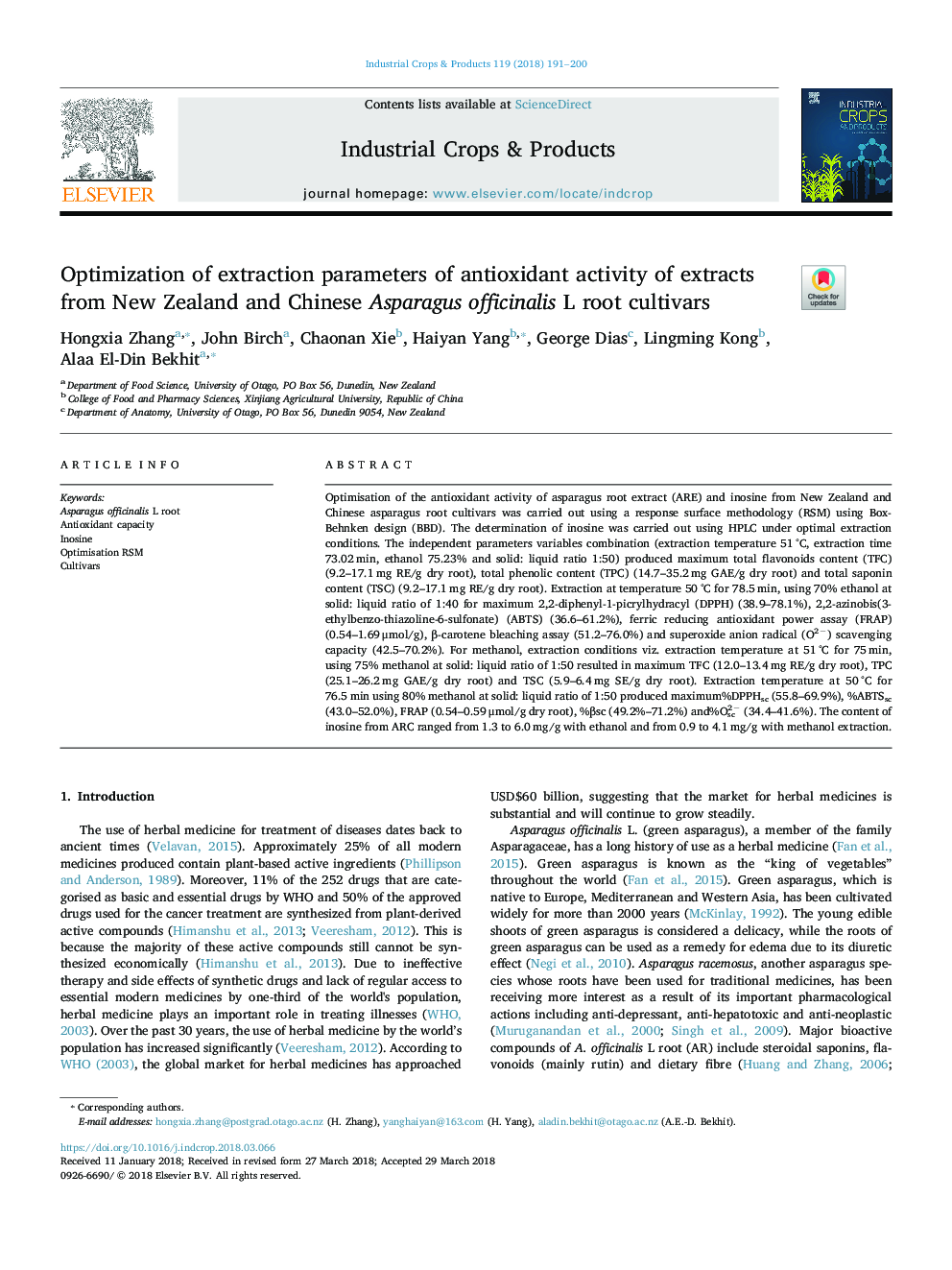| Article ID | Journal | Published Year | Pages | File Type |
|---|---|---|---|---|
| 8879978 | Industrial Crops and Products | 2018 | 10 Pages |
Abstract
Optimisation of the antioxidant activity of asparagus root extract (ARE) and inosine from New Zealand and Chinese asparagus root cultivars was carried out using a response surface methodology (RSM) using Box-Behnken design (BBD). The determination of inosine was carried out using HPLC under optimal extraction conditions. The independent parameters variables combination (extraction temperature 51â¯Â°C, extraction time 73.02â¯min, ethanol 75.23% and solid: liquid ratio 1:50) produced maximum total flavonoids content (TFC) (9.2-17.1â¯mg RE/g dry root), total phenolic content (TPC) (14.7-35.2â¯mg GAE/g dry root) and total saponin content (TSC) (9.2-17.1â¯mg RE/g dry root). Extraction at temperature 50â¯Â°C for 78.5â¯min, using 70% ethanol at solid: liquid ratio of 1:40 for maximum 2,2-diphenyl-1-picrylhydracyl (DPPH) (38.9-78.1%), 2,2-azinobis(3-ethylbenzo-thiazoline-6-sulfonate) (ABTS) (36.6-61.2%), ferric reducing antioxidant power assay (FRAP) (0.54-1.69â¯Î¼mol/g), β-carotene bleaching assay (51.2-76.0%) and superoxide anion radical (O2â) scavenging capacity (42.5-70.2%). For methanol, extraction conditions viz. extraction temperature at 51â¯Â°C for 75â¯min, using 75% methanol at solid: liquid ratio of 1:50 resulted in maximum TFC (12.0-13.4â¯mg RE/g dry root), TPC (25.1-26.2â¯mg GAE/g dry root) and TSC (5.9-6.4â¯mg SE/g dry root). Extraction temperature at 50â¯Â°C for 76.5â¯min using 80% methanol at solid: liquid ratio of 1:50 produced maximum%DPPHsc (55.8-69.9%), %ABTSsc (43.0-52.0%), FRAP (0.54-0.59â¯Î¼mol/g dry root), %βsc (49.2%-71.2%) and%O2âsc (34.4-41.6%). The content of inosine from ARC ranged from 1.3 to 6.0â¯mg/g with ethanol and from 0.9 to 4.1â¯mg/g with methanol extraction.
Keywords
Related Topics
Life Sciences
Agricultural and Biological Sciences
Agronomy and Crop Science
Authors
Hongxia Zhang, John Birch, Chaonan Xie, Haiyan Yang, George Dias, Lingming Kong, Alaa El-Din Bekhit,
